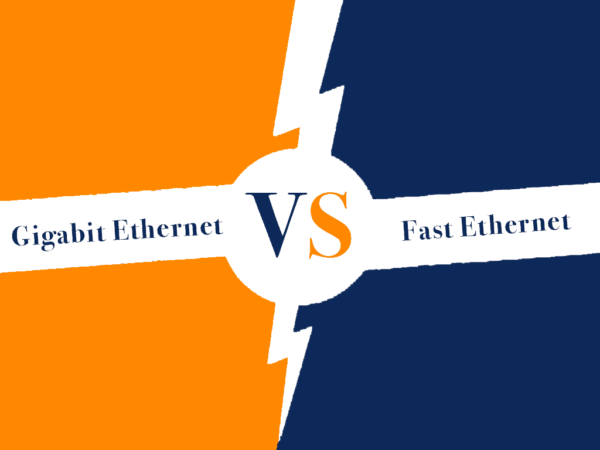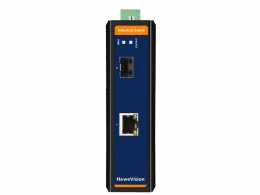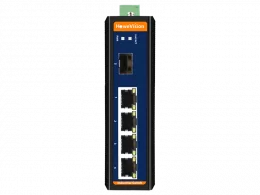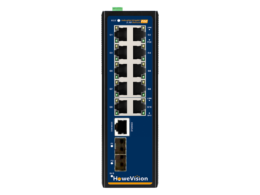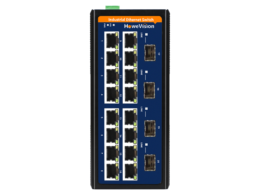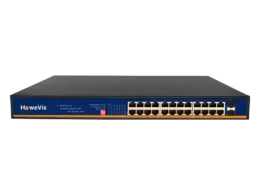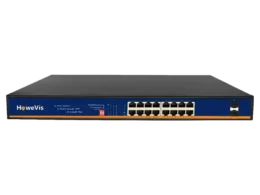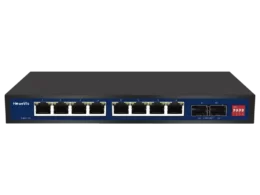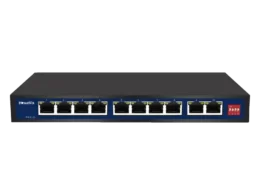Introduction
Nowadays, we use Ethernet to connect computers to different forms of networks. It includes metropolitan area networks (MAN), wide area networks (WAS), and local area networks (LAN).
Ethernet lets businesses extend their network without even disrupting their current workflow. Thus, we consider it as an inexpensive solution for network connectivity.
Nevertheless, Ethernet comes in multiple types, including Switch Ethernet, Gigabit Ethernet, and Fast Ethernet. From these three types, I am going to explain both Fast Ethernet and Gigabit Ethernet in detail.
In short, Fast Ethernet made a quick and easy replacement for 10-Base-T Ethernet. On the other hand, Gigabit Ethernet replaced Fast Ethernet in 1999. Even though both these technologies are still playing a significant role in today’s world.
So, what is the meaning of Fast Ethernet and Gigabit Ethernet? Do they have any significant differences? Let’s find out!
Quick Introduction of Gigabit Ethernet and Fast Ethernet
I understand that the terms Gigabit Ethernet and Fast Ethernet are a bit confusing. Many users might think that both are the same thing, with no significant differences other than the cable.
Would you mind going through the below pointers to gain basic knowledge of them?
Fast Ethernet (FE)
Back in 1995, the technology world needed a sharp rise. It needed something that can be faster than old, conventional networks.
The term ‘Fast Ethernet’ changed the scenario by emerging as the fastest Ethernet of that era. It follows the IEEE standard 802.3u and supports 100 Mbps transmission speed, which is relatively fast.
Different types of Fast Ethernet include the following.
- 100 Base-FX
- 100 Base-T4
- 100 Base-TX
As you can see, the term 100 is common in all types. It shows the network’s transmission speed, i.e., 100 Mbps. The term ‘base’ indicates baseband signaling.
After that, the terms ‘T’ and ‘F’ indicate the cable type used for carrying signals. So, F means Fiber, whereas T means twisted pair cable. Finally, you can also see the terms X or 4. These are the line code of signals.
That’s it! Remember all these terms as I use them more often in my posts. Besides, I am going to use them while explaining Gigabit Ethernet too.
Gigabit Ethernet (GE)
If you ask me which is the most widely preferred Ethernet type these days, I would answer Gigabit Ethernet. Though this technology is quite old, established in 1999, it meets today’s connectivity needs greatly.
It supports 1000 Mbps transmission speed along with half-duplex and full-duplex modes. Besides, it follows the IEEE standard 803.2 frameworks.
Initially, users were using this Ethernet over fiber optic cables. But later, they started using it on twisted pair cables.
There are around four standard layers of Gigabit Ethernet, including the following.
- 1000Base – SX
- 1000Base-LX
- 1000Base- CX
- 1000Base-T
The initial purpose of Gigabit Ethernet was to produce a technology that can correctly run on existing networking devices. The Gigabit Ethernet successfully fulfilled this aim.
The Major Differences Between Gigabit Ethernet and Fast Ethernet
Before we learn the differences between these two, let me introduce the similarities between Gigabit Ethernet and Fast Ethernet.
We use both Ethernet types to establish connections in networks. Whether Gigabit Ethernet or Fast Ethernet, we can use them with Ethernet switches, twisted pair cables, and fiber optic cables.
As you can see, both Ethernet types have similarities. They work on the same theory of Ethernet. Yet, they have some noteworthy differences.
I will explain all the differences through the following pointers. In the end, you will also get to know which Ethernet type you should choose.
Year Introduced
The establishment of both these Ethernet types gets us back to the 90s. Fast Ethernet is older, introduced in 1995. Likewise, the Gigabit Ethernet came to this world in 1999.
Despite their year of establishment, both Ethernet types are still relevant in the current technological sphere.
Speed
Both Fast Ethernet and Gigabit Ethernet support different transmission speeds. For example, the transmission speed is 100 Mbps in Fast Ethernet. Likewise, it is 1000 Mbps in Gigabit Ethernet.
So, Gigabit Ethernet is ten times fast than Fast Ethernet. You can use Fast Ethernet for home applications or in small businesses. Such small applications don’t need a speed of more than 100 Mbps.
But, if your applications and workspace need higher internet speeds, go for Gigabit Ethernet. Here are some tips to get full Gigabit speed.
Device Requirements
At the beginning of this section, I said that both Ethernet types use the same devices and cable types. But when it comes to Gigabit Ethernet, it needs specially designed Ethernet switches and cables.
PoE switches are pretty typical for Gigabit Ethernet. From4-ports Gigabit PoE switches to24-ports Gigabit PoE switches, these are available in a great variety. Here is your guide to choosing a Gigabit switch.
Configuration
Considering the device requirements of both Ethernet types, it seems like Fast Ethernet has fewer needs. So, it is less likely to have configuration issues in Fast Ethernet.
Since Gigabit Ethernet uses specially designed devices, you may face some configuration issues.
Upgradation
Let’s say you want to upgrade from one Ethernet type to another. For example, if you upgrade from Standard Ethernet to Fast Ethernet, you will need less investment. Besides, the process can be quick and easy.
But, things can become complex in the case of Gigabit Ethernet. You may need to make a notable investment in buying equipment. Besides, the process might be time-consuming and difficult.
No matter how complex it may appear, you can go for Gigabit Ethernet if you want high transmission speed.
Distance Coverage
There is a big distinction when it comes to distance coverage supported by both Ethernet types.
You will get a distance coverage of up to 10 km with Fast Ethernet. It can be 70 km with Gigabit Ethernet.
Round-trip Delay (RTD)
A web browser takes time to send the signal and get an acknowledgment from the central server. We denote it in milliseconds.
This time duration is nothing but the round-trip delay. I prefer to call it ‘ping time,’ which is a common term in computer networks.
The RTD in Gigabit Ethernet is 4000-bit times. At the same time, Fast Ethernet has an RTD of 100-150 bit times.
As you can see, the delay time shortens in the case of Gigabit Ethernet. In other words, Fast Ethernet has somewhat longer delay times.
After knowing the significant differences between both Ethernet types, I hope you can make the proper selection.
Do you still find it challenging to figure out which Ethernet type is most suitable for you? Then, go for Gigabit Ethernet.
It is the most advanced Ethernet type that offers the fastest transmission speed. Thus, I suggest you invest in getting quality devices to execute Gigabit Ethernet.
Final Thoughts!
Even though there are many different types of Ethernet, we mainly use Fast Ethernet and Gigabit Ethernet in today’s scenario.
The set-up process and configuration of Gigabit Ethernet take time. But, it is worth trying. Remember, Fast Ethernet cannot give you speeds equivalent to Gigabit Ethernet.
Thus, it is the best way to get 1000-Mbps transmission speed, i.e., 1 Gbps. Gigabit Ethernet makes use of advanced cabling technology, flow control protocols, and MAC layer.
